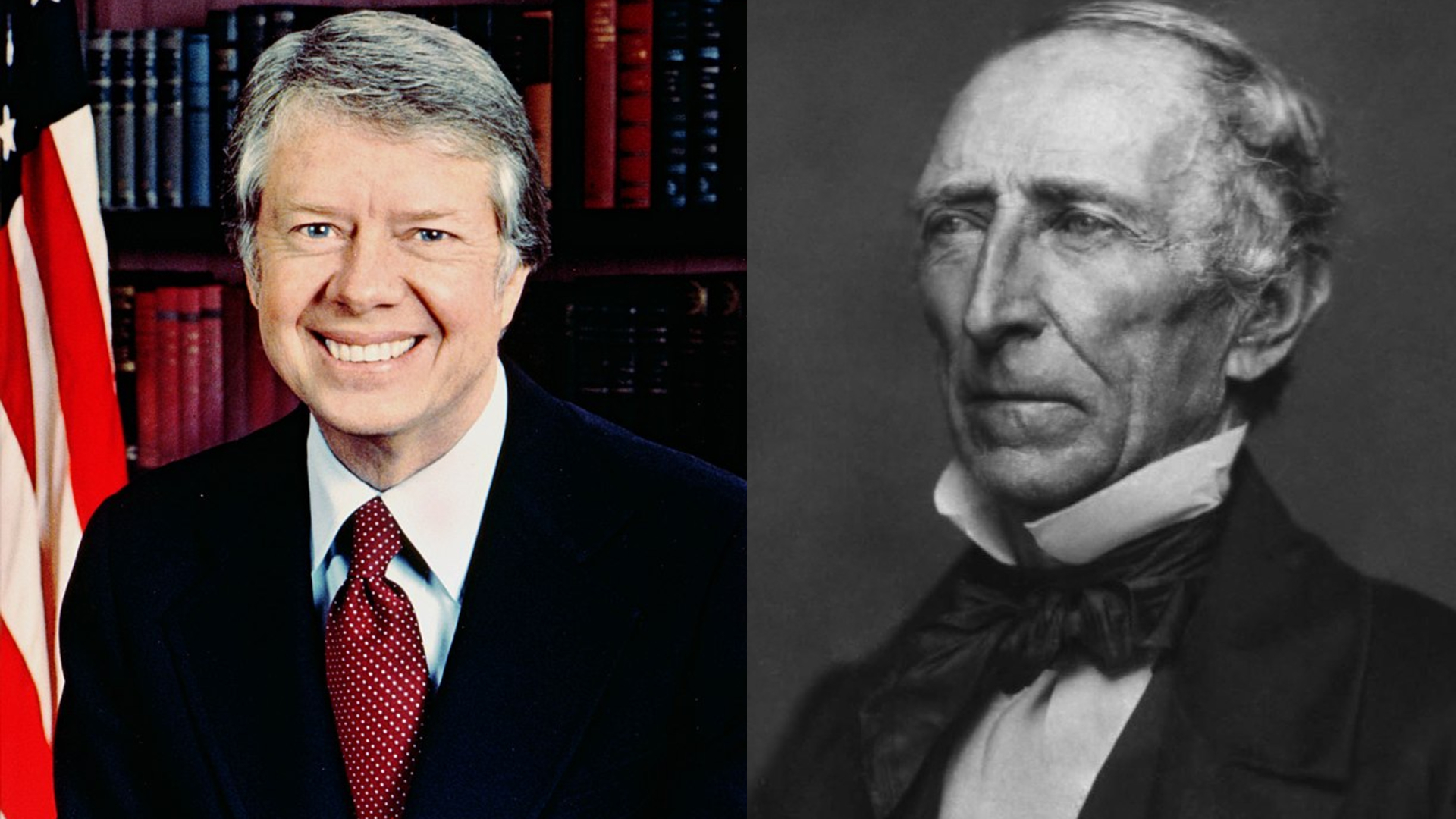Sports Have Come A Long Way
Sports carry memories, rivalries, and moments that leave fans breathless. But the games we cheer today aren’t exactly the ones our grandparents knew. Over time, rules shifted, gear evolved, and traditions transformed. What stayed? The passion. Here’s a look at how 20 beloved sports have changed—reshaped by time, yet still built for thrill.
 Metate yearbook of Pomona College on Wikimedia
Metate yearbook of Pomona College on Wikimedia
1. Basketball
Conceived in 1891, the original game looked nothing like today’s fast-paced showdown—it had nine players per side and no dribbling. Players could only advance by passing. Now, three-pointers (added in 1979–80) and the 24-second shot clock (since 1954–55) keep the game dynamic and strategically intense.
 LOGAN WEAVER | @LGNWVR on Unsplash
LOGAN WEAVER | @LGNWVR on Unsplash
2. Soccer (Football)
Early soccer was once a lawless scramble through muddy villages, with more chaos than rules. Things changed when England’s Football Association standardized gameplay in 1863. Since then, major shifts like the 1912 hand-zone restriction for goalkeepers and VAR’s 2018 debut have dramatically redefined how the sport is judged.
3. Tennis
Tennis began as “jeu de paume,” played with bare hands in echoing indoor courts. Over the centuries, rackets emerged, along with a scoring system. Milestone shifts like the 1970 introduction of tiebreaks and Hawk-Eye reviews in 2006 modernized match endings and resolved line call disputes with high-tech precision.
4. Baseball
This game is rooted in England’s “rounders” and found its true form in 19th-century America. Pitchers once tossed underhand, and gloves were nonexistent until the 1870s. In 2008, MLB adopted instant replay for home run verification, expanding it in 2014 to cover a wider range of critical in-game decisions.
5. Ice Hockey
Born from outdoor stick-and-ball games in 19th-century Canada, early hockey lacked even the most basic protection. Goalies didn’t wear masks until Jacques Plante’s bold move in 1959. When the blue line was added in 1918, it revolutionized strategy by making offside rules and structured attacks possible.
6. American Football
This rugged sport sprang from rugby roots in the 1800s and quickly turned dangerous, prompting President Roosevelt to intervene. The forward pass was legalized in 1906, reshaping offense forever. Helmets, once optional, became mandatory for colleges in 1939 and in the NFL by 1943.
7. Golf
In 15th-century Scotland, golfers used feather-stuffed leather balls and wooden clubs across rough surfaces. The 18-hole standard was introduced much later, in 1764. Today, titanium drivers and GPS-enabled rangefinders define elite play, with the PGA allowing rangefinder use in tournaments starting in 2021.
8. Boxing
Bare-knuckle boxing was once a free-for-all. It took a decisive turn in 1867 with the Marquess of Queensberry rules, introducing gloves and timed rounds. Fighters used to clash without weight divisions or point systems. Now, bouts feature strict regulations, 12-round limits, and punch-tracking tech in major amateur competitions.
9. Swimming
Born from necessity, swimming eventually made waves as a competitive sport in the 1800s. The front crawl didn’t dominate until the early 1900s. Between 2008 and 2009, full-body polyurethane suits helped obliterate world records—so much so that they were banned in 2010 for performance enhancement.
10. Cricket
In its earliest form, cricket featured underarm bowling and matches that lasted days with no time limits. A seismic shift came in 1864 with the legalization of overarm bowling. Then came Twenty20 in 2003, packing excitement into just three hours and introducing music and night games to delight global fans.
11. Volleyball
Designed in 1895 as “mintonette” for older YMCA members, volleyball mashed up basketball, tennis, and handball with unlimited team sizes. Over time, it streamlined into the dynamic, strategic sport we know. Rally scoring, adopted in 1999, made matches shorter, snappier, and more TV-friendly.
12. Auto Racing
The first auto races of the 1890s were perilous open-road marathons devoid of modern safeguards. Helmets and seatbelts were introduced much later, and pit stops were still primitive. With the rise of telemetry and Formula 1’s Halo cockpit device in 2018, the sport took a major leap in safety innovation.
13. Rugby
Legend has it that rugby began in 1823 when a schoolboy defied soccer norms by running with the ball. What followed were wild, unregulated matches. Current games are built on discipline and data, featuring GPS-tracked performance, concussion protocols, and instant replay systems adopted in 2001.
14. Gymnastics
Gymnastics was originally shaped by ancient Greek military drills before it entered the competitive arena in the 19th century with the introduction of rigid standards. That all changed in 2006 when scoring moved beyond the perfect 10. This shift unleashed routines like Simone Biles’ gravity-defying feats that defy previous athletic limits.
15. Cycling
Once dominated by towering penny-farthings, cycling’s early days were equal parts danger and grit. When the Tour de France debuted in 1903, riders were required to repair their own bikes. Now, carbon fiber frames and on-bike power meters, popular since the 2000s, have turned racing into a data-driven science.
16. Wrestling
Since ancient Mesopotamia, wrestling has evolved from raw physical combat without regulation. Olympic wrestling now has rules and point systems, while professional wrestling underwent a complete metamorphosis in the 20th century. Wrestling changed into a scripted spectacle with global fan bases and entertainment empires.
 Mohammad Hassanzadeh / Tasnimnews on Wikimedia
Mohammad Hassanzadeh / Tasnimnews on Wikimedia
17. Table Tennis
What started as a quirky parlor game with cigar box lids and cork balls is now a global sport. Rubber paddles revolutionized the game in the 1950s, introducing speed and spin. In 2000, the ITTF increased ball size for better visibility, further elevating the viewer experience.
18. Skiing
First developed in Scandinavia as a means of gliding over snow for hunting or travel, skiing evolved into a competitive sport by the 20th century. Alpine racing added structure and safety. The Olympics embraced its wild side in 2018 by adding adrenaline-heavy events like ski cross and big air.
19. Surfing
Only a few sports are as deeply rooted in culture as surfing, which was sacred in ancient Polynesia. It began on enormous wooden boards that stretched over 16 feet and weighed a small ton. Today, lightweight materials and jet-ski assist power tow-in surfers through 70-foot monster waves.
20. Lacrosse
This was once a ceremonial and diplomatic tradition among Native American tribes, featuring hundreds of players and no time limits. Modern rules introduced team caps, protective gear, and boundaries. The Premier Lacrosse League’s launch in 2019 brought fresh energy and professional structure to this deeply rooted game.
KEEP ON READING

1 Weird Fact About Every President
Washington, Lincoln, FDR. Most people know something about the lives…
By Robbie Woods Dec 3, 2024
10 Amazing Popes & 10 Who Weren't So Great
An Odd Cast of Characters Throughout History. From popes who…
By Henry Judd Apr 29, 2025
10 Ancient Civilizations You Don’t Want to Be Trapped In…
Grab Your Time Machine. Trying to pick out an ancient…
By Farva Ivkovic Feb 21, 2025
10 Brilliant Military Tactics That Changed History & 10 That…
That Time Egypt Fought 100 Cats. Sometimes reality is stranger…
By Farva Ivkovic Jan 22, 2025
10 Common Misconceptions About Vikings & 10 Facts Everyone Should…
Truth's Way Cooler Than Legend. You can say a lot…
By David Davidovic May 12, 2025
10 Cool Facts About Machu Picchu & 10 Reasons Why…
Why Do We All Want To See Machu Picchu?. Machu…
By Megan Wickens Oct 23, 2024


















